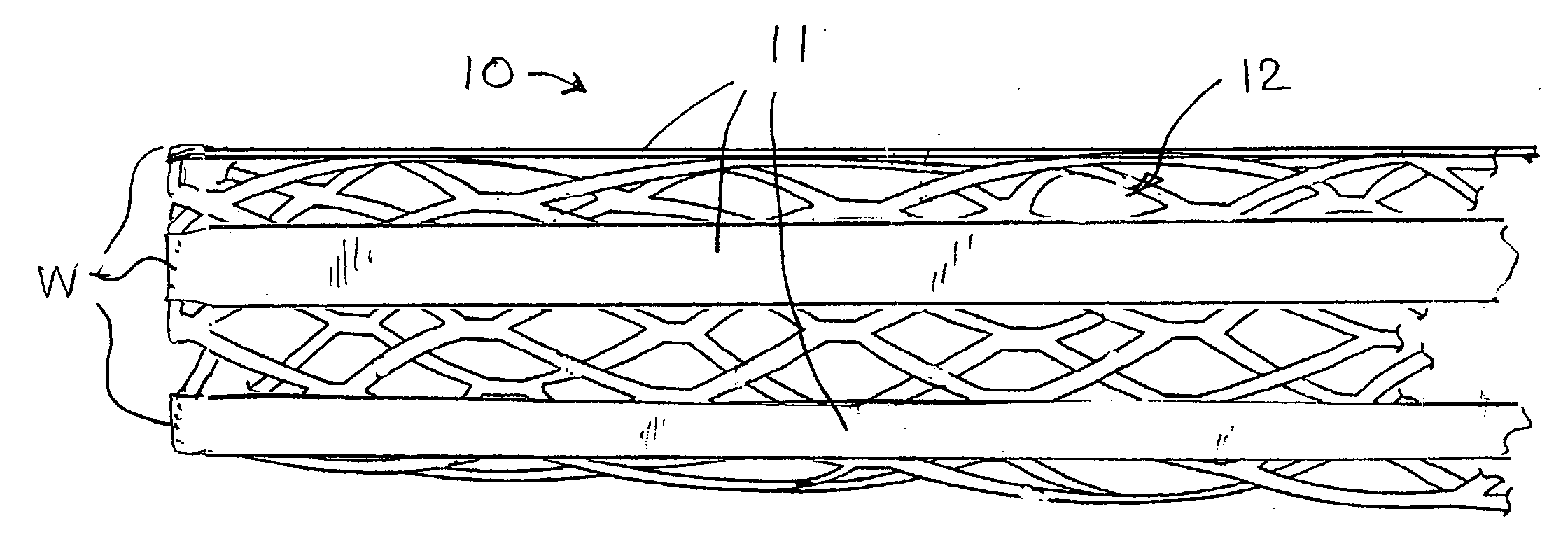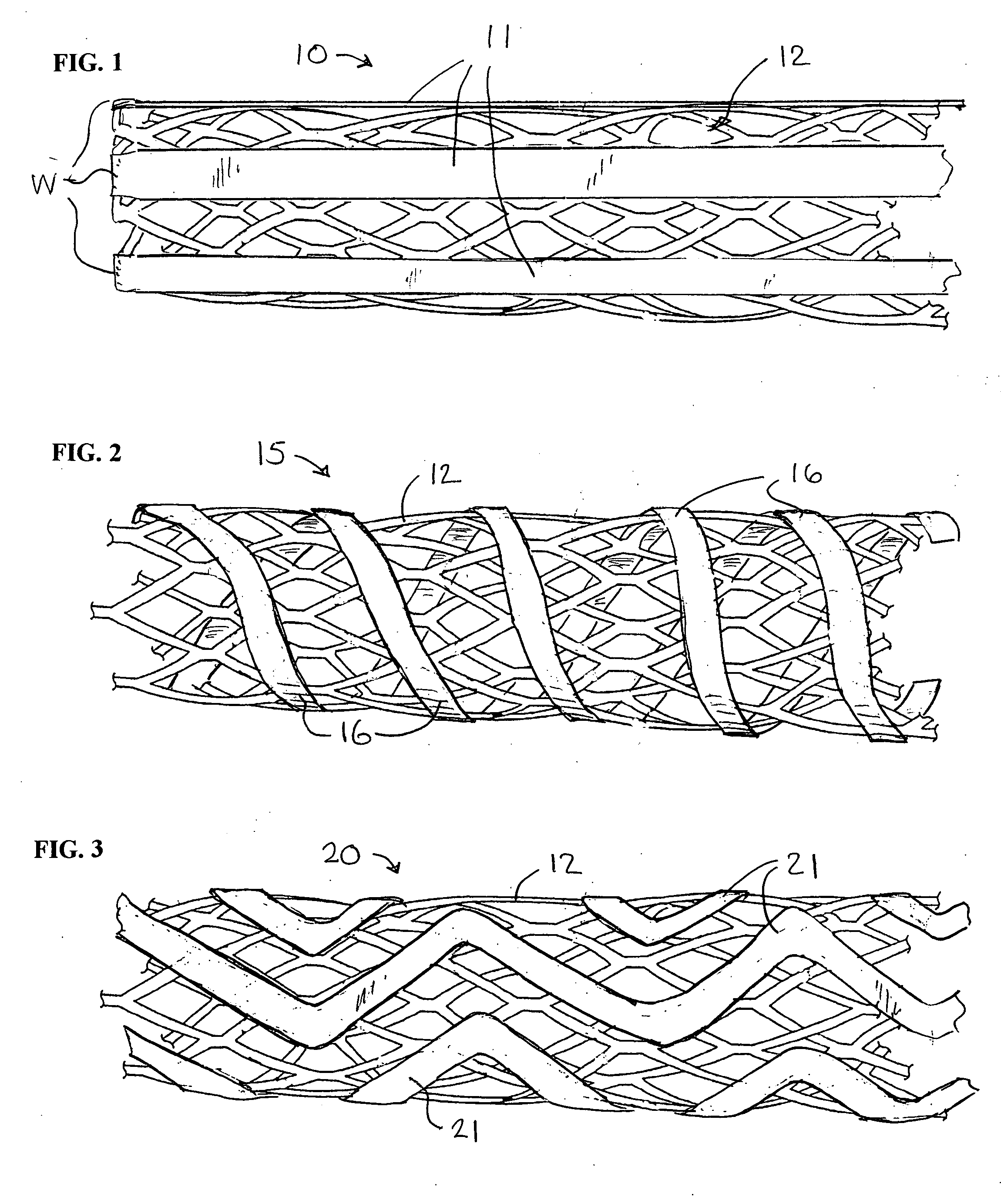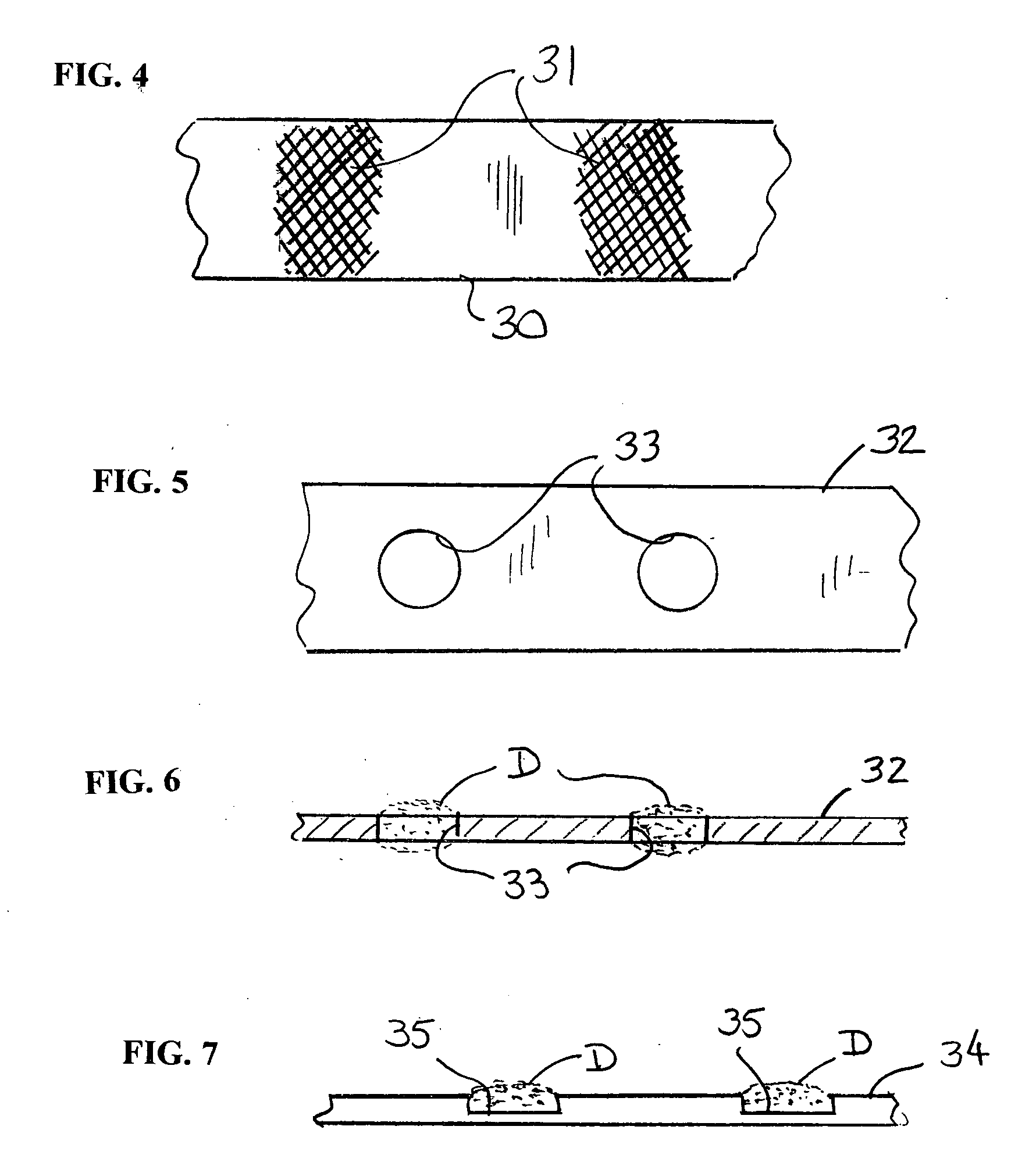Stent with auxiliary treatment structure
a technology of auxiliary treatment structure and stent, which is applied in the field of medical devices, can solve the problems of sudden closure of the vessel, ischemic injury, stroke or myocardial infarction, death or disability of tens of thousands of people, etc., and achieve the effect of reducing the turbulence of fluid flow
- Summary
- Abstract
- Description
- Claims
- Application Information
AI Technical Summary
Benefits of technology
Problems solved by technology
Method used
Image
Examples
first embodiment
[0061] a stent with auxiliary treatment structure according to the invention is shown generally at 10 in FIG. 1. In this embodiment, a plurality of relatively wide bands or ribbons 11 are attached at least at one end to one end of the stent 12, and extend generally straight and parallel to one another longitudinally of the stent. The stent may be of any suitable construction, and in the example shown is of the type depicted in FIG. 10.
[0062] In order to permit expansion of the stent, the ribbons preferably are attached to the stent at only one end. In some stent constructions, the ribbons may be attached to both ends of the stent, and when the stent is expanded radially, it can shrink axially to accommodate expansion, even with the ribbons attached to both ends of the stent. Attachment of the ribbons can be by welding or other means known in the art, as represented at W in FIG. 1. Although not shown, it should be understood that the following embodiments could be similarly secured. ...
second embodiment
[0063] A second embodiment is shown at 15 in FIG. 2, wherein the ribbons 16 are wound around the stent 12 in a spiral pattern. As in the previous form, the ribbons can be attached at only one end or at both ends, depending upon the structure of the stent and the ability of the stent to undergo radial expansion with the ribbons attached.
third embodiment
[0064] A third embodiment is shown at 20 in FIG. 3, wherein the ribbons 21 are applied to the stent 12 in a zig-zag pattern. As in the previous form, the ribbons can be attached at only one end or at both ends, depending upon the structure of the stent and the ability of the stent to undergo radial expansion with the ribbons attached.
[0065]FIG. 4 depicts a ribbon 30 having roughened or textured areas 31 on its surface to provide a surface for enhanced mechanical bonding of a drug or other beneficial agent to the surface of the ribbon.
[0066]FIGS. 5 and 6 depict a ribbon 32 having openings or holes 33 formed through it to provide a means for applying a drug or other beneficial agent D to the ribbon.
[0067]FIG. 7 depicts a ribbon 34 having recesses or depressions 35 formed in the surface to provide a means for applying a drug or other beneficial agent D to the ribbon.
[0068]FIGS. 8 and 9 depict a section 36 of a stent body or a ribbon made of interwoven strands of material 37 and 38. ...
PUM
 Login to View More
Login to View More Abstract
Description
Claims
Application Information
 Login to View More
Login to View More - R&D
- Intellectual Property
- Life Sciences
- Materials
- Tech Scout
- Unparalleled Data Quality
- Higher Quality Content
- 60% Fewer Hallucinations
Browse by: Latest US Patents, China's latest patents, Technical Efficacy Thesaurus, Application Domain, Technology Topic, Popular Technical Reports.
© 2025 PatSnap. All rights reserved.Legal|Privacy policy|Modern Slavery Act Transparency Statement|Sitemap|About US| Contact US: help@patsnap.com



